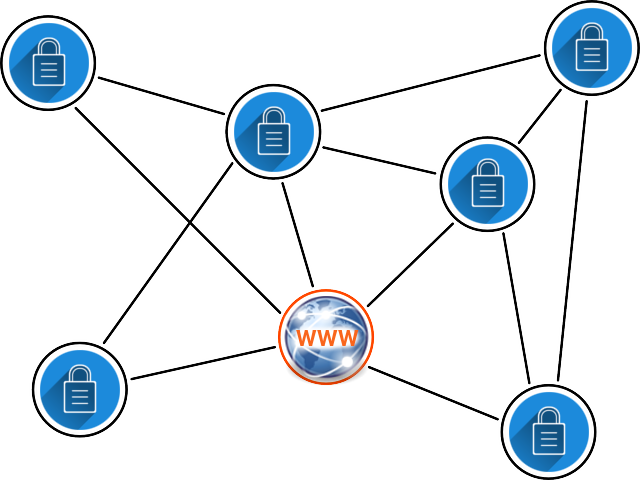Hybrid SD WAN Solutions

The landscape of enterprise networking has undergone significant transformations in recent years, driven largely by the need for greater agility, flexibility, and cost-effectiveness. One of the key technologies at the forefront of this change is Software-Defined Wide Area Networking (SD-WAN). SD-WAN solutions have gained popularity for their ability to simplify the management and operation of a wide area network by providing a centralized, software-defined approach to managing network connectivity. However, as with any technology, the evolution of SD-WAN has led to the development of hybrid models that aim to combine the benefits of traditional networking with the agility and cost savings of SD-WAN. In this article, we’ll delve into the world of hybrid SD-WAN solutions, exploring their concept, benefits, challenges, and future prospects.
Introduction to Hybrid SD-WAN
Hybrid SD-WAN refers to the integration of SD-WAN technology with traditional network architectures, such as Multiprotocol Label Switching (MPLS), to create a network that can dynamically allocate traffic across different transport methods based on the application’s requirements. This approach allows enterprises to leverage the reliability and quality of service (QoS) of MPLS for critical applications while utilizing cheaper internet connections for less critical traffic. The hybrid model offers a balanced approach, enabling organizations to benefit from the best of both worlds—reliability, security, and the cost-effectiveness of broadband internet, combined with the performance guarantees of MPLS.
Key Components of Hybrid SD-WAN Solutions
- SD-WAN Appliances or Software: These are the core components that manage traffic routing, provide visibility into network conditions, and enforce policies based on application requirements.
- MPLS and Internet Links: Hybrid SD-WAN solutions utilize both MPLS for predictable, high-priority traffic and internet connections for less critical traffic, providing a cost-effective approach.
- Application Awareness: The ability to identify and prioritize applications in real-time, ensuring that critical applications receive the necessary bandwidth and Quality of Service (QoS).
- Security: Integrated security features or the ability to integrate with existing security solutions to protect the network from threats, regardless of the connection type used.
- Centralized Management: A single interface for managing the entire network, including configuration, monitoring, and troubleshooting, simplifying the management of complex network infrastructures.
Benefits of Hybrid SD-WAN Solutions
- Cost Savings: By leveraging internet connections for non-critical traffic, organizations can significantly reduce their networking costs.
- Improved Agility: Hybrid SD-WAN solutions enable rapid deployment of new sites and services, improving the overall agility of the organization.
- Enhanced Application Performance: Real-time traffic steering and application awareness ensure that critical applications receive the necessary network resources, regardless of the underlying transport.
- Simplified Management: Centralized management platforms simplify the operation of complex networks, reducing the need for specialized IT skills.
- Increased Reliability: The ability to dynamically route traffic around network outages or congestion improves overall network reliability and uptime.
Challenges and Considerations
While hybrid SD-WAN solutions offer numerous benefits, their implementation and management come with several challenges:
- Complexity: Integrating SD-WAN with existing infrastructure can introduce complexity, requiring careful planning and management.
- Security: Ensuring the security of the network, especially when incorporating internet links, is a critical consideration.
- Application Visibility: Gaining comprehensive visibility into application performance and behavior is essential for effective traffic management.
- Change Management: Adopting a hybrid SD-WAN solution often requires significant changes to existing network policies and procedures.
Future of Hybrid SD-WAN
The future of hybrid SD-WAN solutions looks promising, with ongoing innovations aimed at further simplifying network management, improving security, and enhancing application performance. Emerging technologies, such as artificial intelligence (AI) and machine learning (ML), are expected to play a significant role in the evolution of SD-WAN, enabling more intelligent and autonomous network decision-making. Additionally, the integration of SD-WAN with other technologies, such as cloud computing and the Internet of Things (IoT), will continue to expand its capabilities and applications.
Implementing Hybrid SD-WAN Successfully
For organizations considering the adoption of a hybrid SD-WAN solution, several best practices can help ensure a successful implementation:
- Assess Network Requirements: Understand the current network usage, application requirements, and future growth needs.
- Choose the Right Technology: Select a hybrid SD-WAN solution that aligns with your organization’s specific needs and existing infrastructure.
- Develop a Clear Strategy: Plan carefully, considering factors such as security, scalability, and manageability.
- Monitor and Adjust: Continuously monitor network performance and adjust policies as necessary to ensure optimal application delivery and network efficiency.
Conclusion
Hybrid SD-WAN solutions represent a significant step forward in the evolution of enterprise networking, offering a balanced approach that combines the reliability of traditional networks with the agility and cost savings of SD-WAN. As organizations navigate the complexities of digital transformation, solutions like hybrid SD-WAN will play a critical role in enabling the flexible, high-performance networks that underpin success in today’s fast-paced business environment. By understanding the benefits, challenges, and future prospects of hybrid SD-WAN, enterprises can better position themselves to leverage this technology for competitive advantage.
What is a Hybrid SD-WAN Solution?
+A hybrid SD-WAN solution combines traditional networking technologies, such as MPLS, with software-defined wide area networking (SD-WAN) to provide a flexible and cost-effective approach to network management.
What are the Key Benefits of Hybrid SD-WAN Solutions?
+The key benefits include cost savings, improved agility, enhanced application performance, simplified management, and increased reliability. These benefits are achieved by leveraging the strengths of both MPLS and SD-WAN technologies.
What Challenges Should Organizations Consider When Implementing Hybrid SD-WAN Solutions?
+Organizations should consider the complexity of integrating SD-WAN with existing infrastructure, ensuring network security, gaining comprehensive application visibility, and managing the change process effectively.

